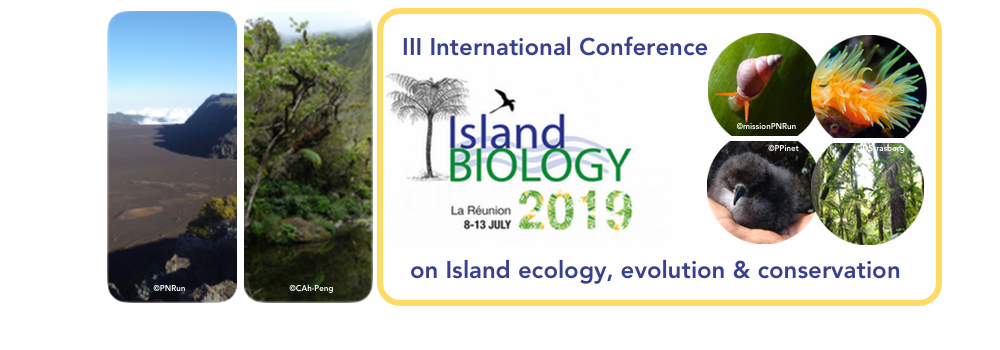The Forests gAses aeRosols Clouds Exploratory (FARCE) campaign was conducted in March-April 2015 on the tropical island of La Réunion. For the first time, several scientific teams from different disciplines collaborated to provide reference measurements and characterization of La Réunion vegetation, (biogenic) volatile organic compounds (BVOCs), (bio)aerosols and composition of clouds, with a strong focus on the Maïdo mountain slope area. The main observations obtained during this two-month intensive field campaign are summarized. They include characterizations of forest structure, concentrations of VOCs and precursors emitted by forests, aerosol loading and optical properties in the planetary boundary layer (PBL), formation of new particles by nucleation of gas-phase precursors, ice nucleating particles concentrations, and biological loading in both cloud-free and cloudy conditions. Simulations and measurements confirm that the Maïdo Observatory lies within the planetary boundary layer from late morning to late evening and that, when in the PBL, the main primary sources impacting the Maïdo Observatory are from marine origin via the Indian Ocean and from biogenic origin through the dense forest cover. They also show that i) the marine source prevails less and less while reaching the Observatory, ii) when in the PBL, depending on the localization of a horizontal windshear, the Maïdo Observatory can be affected by air masses coming directly from the ocean and passing over the Maïdo mount slope, or coming from inland, iii) bioaerosols can be observed in both cloud-free and cloudy conditions at the Maïdo Observatory, iv) BVOCs emissions by the forest covering the Maïdo mount slope can be transported upslope within clouds and are a potential way of secondary organic aerosols formation in aqueous phase at the Maïdo Observatory. These results largely contributed to the setting up of the OCTAVE 2017-2019 (Oxygenated Compounds in the Tropical Atmosphere: Variability and Exchanges) and Biomaïdo 2019-2021 projects. These projects will provide new material for the study of nucleation processes, sources and seasonal cycles of VOC and halogens from forests and the ocean, and will focus on the contribution of the aqueous reactivity to the secondary organic aerosols' (SOA) budget.

|
|
|
|
Preliminary results from the FARCE 2015 campaign: multidisciplinary study of the forests-gases-aerosols-clouds system in the tropical island of La Réunion
1 : Université de la Réunion
(UR)
15, avenue René Cassin - CS92003 -97744 Saint Denis Cedex 9 -
Réunion
2 : Laboratoire de lÁtmosphère et des Cyclones
(LACy)
Météo France, Université de la Réunion, Centre National de la Recherche Scientifique : UMR8105
Faculté des Sciences et techniques - Université de La Réunion 15 avenue René Cassin CS92003 97744 SAINT DENIS CEDEX 9 -
France
3 : Université de La Réunion - UMR Peuplements végétaux et bioagresseurs en milieu tropical
(UMR PVBMT)
-
Website
15 avenue René Cassin 97744 SAINT DENIS Cedex -
Réunion
4 : Peuplements végétaux et bioagresseurs en milieu tropical
(UMR PVBMT)
Faculté des Sciences et techniques - Université de La Réunion 15 avenue René Cassin CS92003 97744 Saint-Denis Cédex 9 pour le Cirad Station de Ligne-Paradis - 7 chemin de lÍRAT - 97410 Saint-Pierre -
Réunion
5 : Laboratoire de Météorologie Physique - Clermont Auvergne
(LaMP)
Institut national des sciences de l\'Univers, Université Clermont Auvergne : UMR6016, Centre National de la Recherche Scientifique : UMR6016, Institut national des sciences de l\'Univers
bat. Physique 5 - 3ème étg / 24 Av des landais / 63177 Aubière Cedex -
France
6 : National Oceanic and Atmospheric Administration
(NOAA)
Boulder, CO -
United States
|
| Online user: 61 | RSS Feed |

|
 PDF version
PDF version